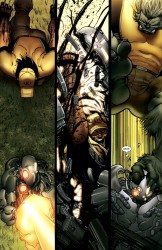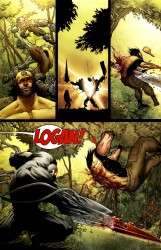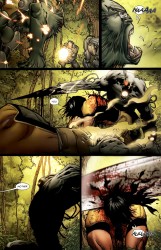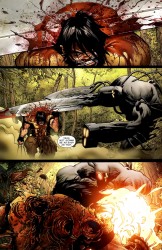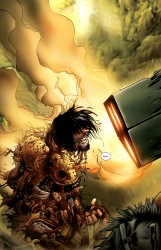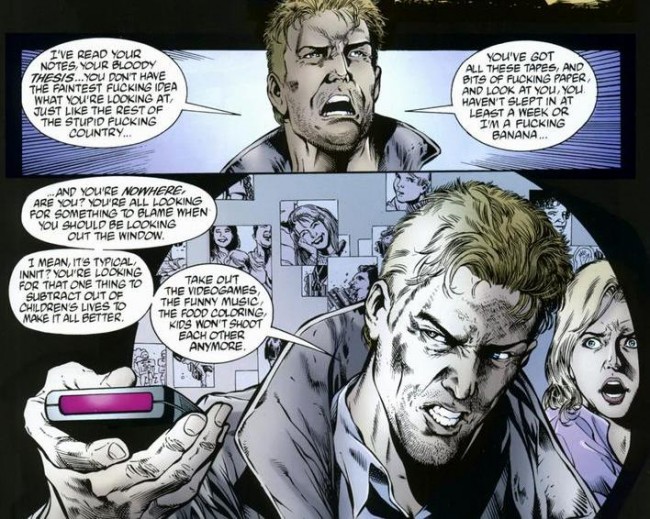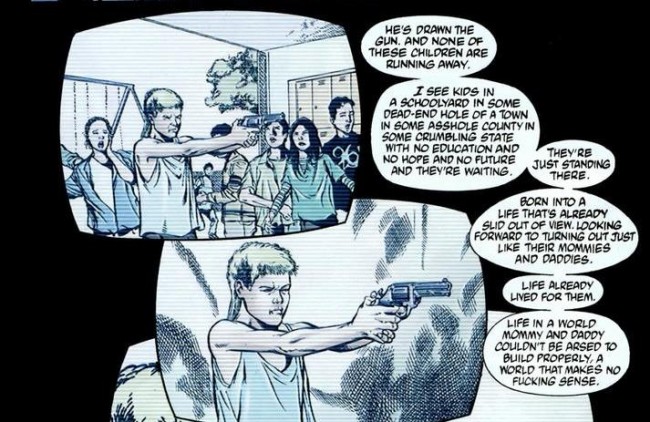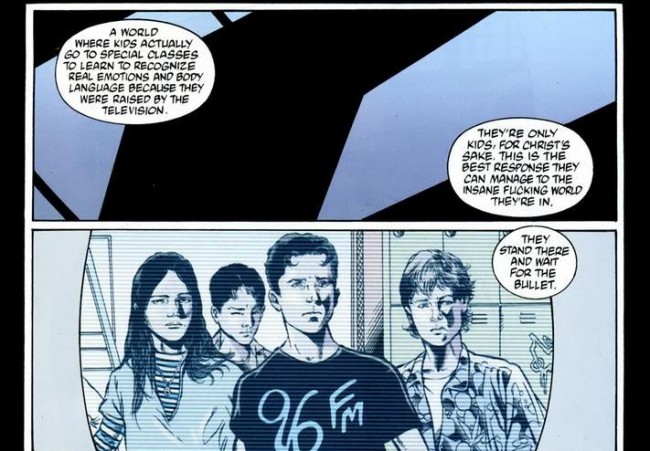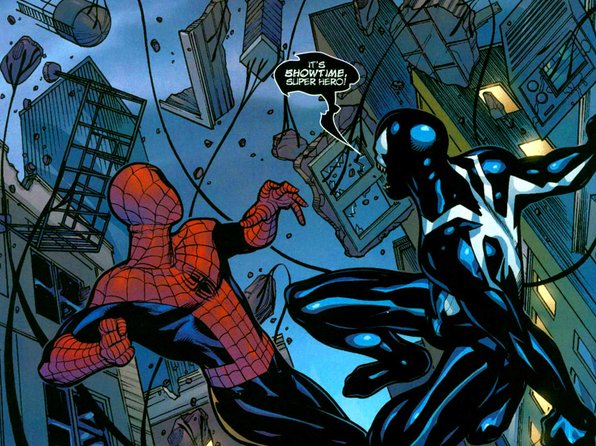
The Many Deaths of Frank Castle
February 14th, 2012 Posted by GavokLast week, we lost one hell of an ongoing series with Punisher MAX #22 by Jason Aaron and Steve Dillon. A lot of the time, when a series is canceled, the writer will claim that it isn’t true and that they insisted it end at this point. Sometimes it smells like bullshit, but here it’s legit as Aaron takes the MAX incarnation of the character to the logical conclusion. Frank Castle of Earth-200111 (yes, I looked it up), is dead. After taking on MAX incarnations of some of his usual punching bags, Frank’s body has finally given out and he collapses after being the last man standing one last time.
But so what? So he’s dead. Big deal. Frank Castle dies all the time, doesn’t he? Sure. I’ve seen it so many times I decided to take a trip down memory lane. As far as I can tell, here is the master list of all the times Frank has kicked the bucket. Now, of course, I’m not counting any “Earth blows up” scenarios because that goes without saying. I don’t need to mention every single time the Phoenix devours the universe. It has to be specifically about Frank buying the farm. I’ll also pass on the really vague mentions, like how he died somewhere along the line prior to Punisher 2099.
Despite debuting in 1974, it would take 17 years for any version of Frank to die. Not only did he die in 1991, but he died a lot. In the second volume of Marvel’s What If, Frank died three issues in a row! Let’s begin with that.
Comic: What If #24 (What If Wolverine Was Lord of the Vampires?)
Year: 1991
Writer: Roy Thomas and R.J.M. Lofficier
Artist: Tom Morgan
Background: The world of this issue is based on the time the X-Men fought Dracula. Rather than be defeated, Dracula turns the team to his side. Wolverine, being so awesome, has enough willpower to challenge Dracula. He ends up killing the Count and takes over his throne. While these days, a supernatural outbreak needs to take over the entire world to show that shit’s gotten real, Wolverine is happy enough taking over Manhattan and using it as his vampire nest. With no real reason given, some heroes and villains are turned to slaves while others are ordered by Wolverine to be killed completely. I feel the need to mention that artist Tom Morgan decided to include Frog-Man of all people into that latter group. Anyway, the whole city is in chaos and in that chaos is Frank Castle with a headband and a whole lot of silver bullets.
In regular continuity, Dr. Strange would read a spell that would wipe out all vampires. Vampire Wolverine gets wind of this and has Vampire Juggernaut take down Strange. Strange possesses the bitching cape and the Eye of Agamotto, then joins it with the Punisher to make the ultimate vampire-killing machine. Because nobody cared about Blade back then.

Punisher killing superhero vampires is a thing to see. He melts Colossus with holy water and fries Juggernaut with the Eye of Agamotto. That leads him to a one-on-one fight with Wolverine.


